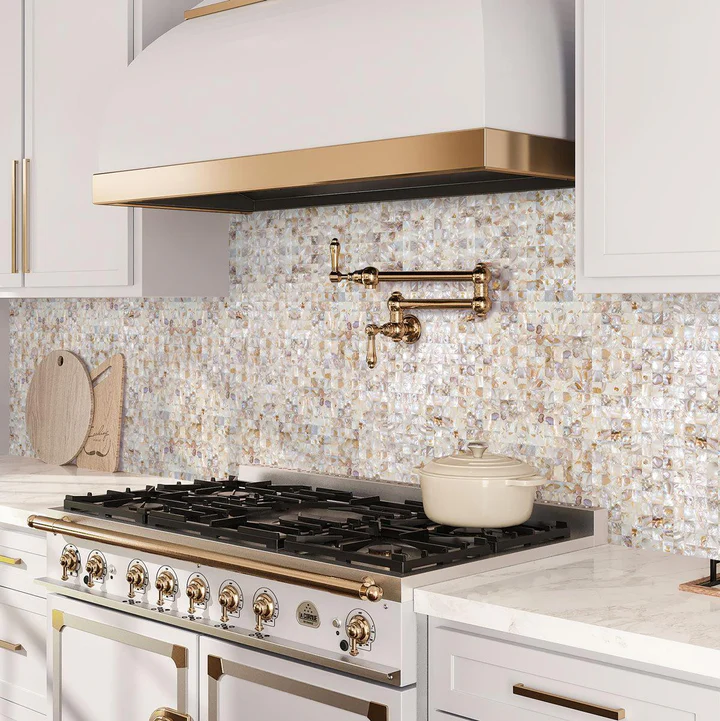Mother-of-pearl tiles enjoy a renaissance in interior design thanks to their enduring beauty and versatility. Their iridescent glow has captured the imagination of designers and homeowners alike, who use them to add a touch of elegance to modern and traditional spaces. Particularly when used as a mother of pearl backsplash tile, these tiles effortlessly enhance the aesthetic value of any room, reflecting light and giving surfaces a natural shine that changes with the angle of view.
Because of their versatility, these tiles may be used in a broad range of design aesthetics, from lavish to minimalist. Their luxurious appeal is undeniable but doesn’t overwhelm a space, allowing other design elements to stand out. This article explores many advantages and applications of mother-of-pearl tiles and advises successfully incorporating them into your home design.
Introduction to Mother of Pearl Tiles
Valued for their shimmering elegance, mother-of-pearl tiles consist of nacre, the natural substance that lines the insides of mollusk shells. Prized for its lustrous and pearly appearance, this material has historically decorated everything from jewelry to artistic pieces. In interior design, mother-of-pearl tiles bring a unique texture and a play of light and color, elevating the aesthetic quality of spaces in a way that’s hard to replicate with other materials. Beyond their beauty, they are also favorable for their durability and easy maintenance, adding a practical edge to their appeal.
Historical Context and Revival in Design
Mother of pearl has long been associated with artistry and wealth. Used by ancient civilizations to embellish treasures and royal objects, its luxurious appeal has transcended time. Fast forward to today, and its presence in modern interiors is a testament to its timeless quality. Inspired by trends that breathe new life into vintage looks, these tiles have regained popularity among today’s architects and designers.
Design Versatility and Applications
The wide range of applications for mother-of-pearl tiles underscores their versatility. They are often seen adorning kitchen backsplashes, where their reflective properties can illuminate under-cabinet areas, adding warmth and depth. In bathrooms, they can turn ordinary spaces into serene retreats with their water-resistant qualities and luxurious appearance. Their adaptability extends to accent walls and feature areas, where they can create focal points that captivate the eye and enhance a room’s overall design narrative. Seamlessly integrating with various styles, they work harmoniously in both minimalist and elaborate settings.
Advantages of Using Mother of Pearl Tiles
Besides their astounding beauty, mother-of-pearl tiles offer several practical advantages. They are the perfect material for humid spaces like bathrooms and kitchens because of their inherent resilience to moisture, which other materials may not withstand. Additionally, they are known for their ability to reflect light, making small or poorly lit spaces appear larger and brighter. This combination of functionality and aesthetic appeal enhances living spaces and adds to a property’s value, making them a wise investment for homeowners looking to improve their homes.
Installation: Tips and Considerations
Proper installation is essential to get the most out of mother-of-pearl tiles and guarantee their endurance. Due to their delicate nature, it’s essential to approach the installation with precision. Preparing the substrate carefully, ensuring even spacing, and using a suitable adhesive can significantly affect the final appearance. While skilled DIY enthusiasts may take on the challenge, hiring an experienced professional installer is often recommended for those seeking a flawless finish. This lowers the possibility of damage during installation and aids in achieving the desired appearance.

